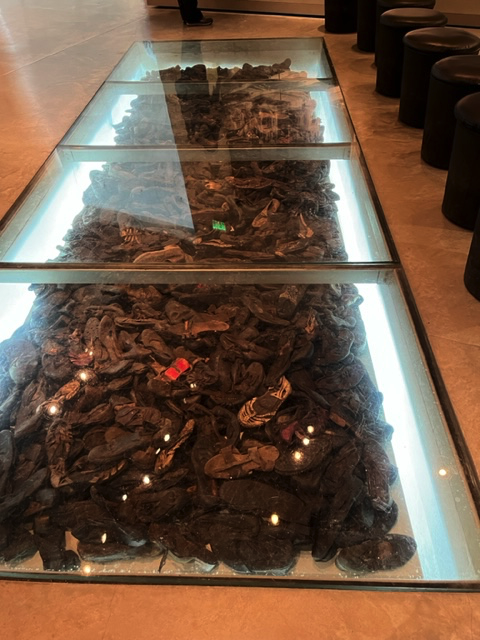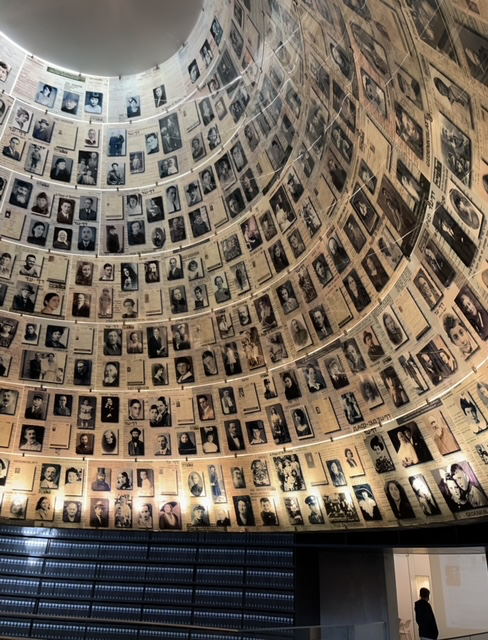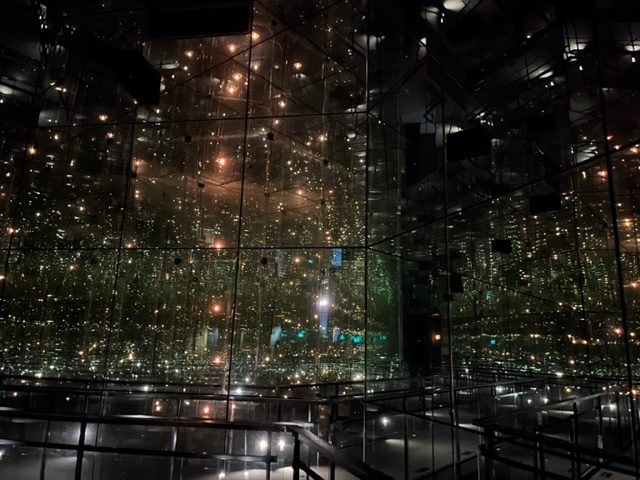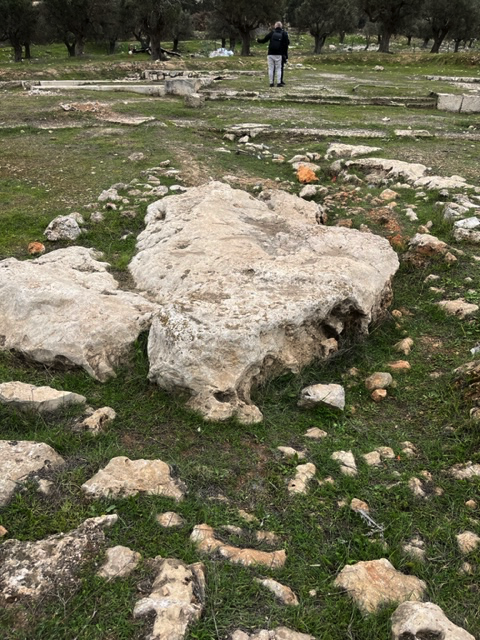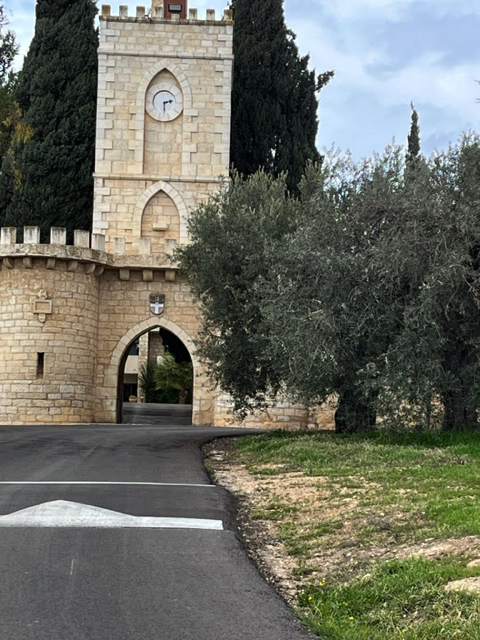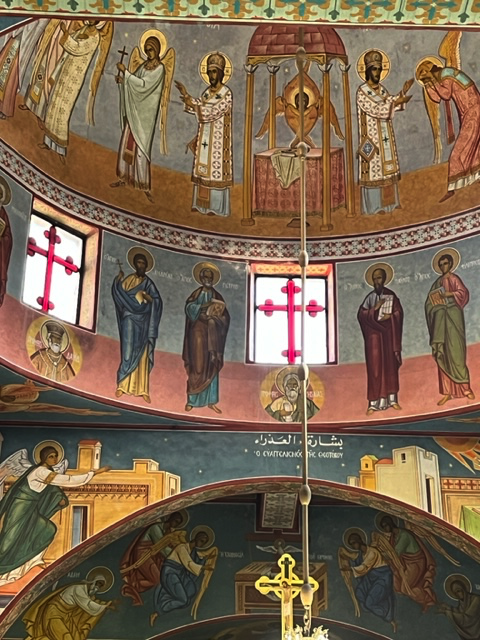I am at Eastern Point Jesuit Retreat House this week on the retreat team for an Ignatian Colleagues Program retreat. Yesterday, I offered the reflection at our afternoon Mass, for which the Gospel was St. Luke’s account of Jesus’ healing of ten lepers. Following is a truncated version of my reflection:
More than the other three Gospels, the Gospel of Luke emphasizes Jesus’ encounters with the outcasts of the society of his day, especially Gentiles, lepers, the poor and women, and we are meant to learn from how he interacts with them. We see Jesus’ concern for those who are marginalized reflected in this episode.
The term used for leprosy in the New Testament was a general reference to a variety of seemingly incurable skin infections. It likey included the affliction, which we now call Hansen’s Disease. By Mosaic law, priests (not doctors) were charged with diagnosing leprosy in people, which is why Jesus instructs the ten to show themselves to the priest after they ask for healing.
A diagnosis of leprosy was a death sentence, physically, socially economically, and spiritually. The leper was considered physically unclean – and contagious – as well as spiritually unclean. As a result, a leper was completely shunned from normal activities of community life – banned from inclusion in worship, prevented from holding a job or living with non-lepers (including his or her own family), prohibited from shopping in a market, owning property, and, of course, touching or hugging others. . The leper’s only option was to beg for scraps, while living in isolation and just waiting to physically deteriorate and die.
If we didn’t before know the psychological effects of that kind of isolation, the COVID lockdown we experienced a few years ago gave many people at least a taste of it. For those of us who were able to carry on at least significant portions of our work and social lives online (how many Zoom happy hours did you have), it was perhaps a mere annoyance. But for a lot of older people like my mother or those who were in one way or another immunocompromised, the emotional and psychological effect of even that limited period of isolation was enormous. (And for some, the effects of that have been quite long lasting.)
I’m also reminded when I think of the treatment of lepers in Jesus’ time– and especially the Samaritan leper who is one of those healed (Samaritans were hated by the Jews, so they were doubly excluded) – of the early days of the AIDs epidemic. The disease was sometimes early on referred to as the “gay disease;” and a group of people that was already looked down upon by many because of their sexuality now became even more stigmatized and discriminated against, as people feared becoming ill by even casual contact with someone who tested positive for HIV. (Even today, when we know so much more about the disease, there are people who suffer from what is actually termed HIV phobia – an obsessive fear they have been infected despite evidence to the contrary.)
So Jesus’ healing of the lepers in this Gospel is more than a physical one. (Indeed, often in reports of Jesus’ healings there is much more than physical healing going on.). This healing is an end of isolation, a restoration to community. Really a return to being treated as a human being with dignity. We see that in other episodes – in Jesus’ cure of the woman with a hemorrhage, or in his cure of the demoniac – and we see it here.
Of course, as always, we are not meant to just give Jesus’ a thumbs up for doing such a great job here. Rather, as it Jesus phrases it elsewhere, we are to “go and do likewise.” “As I have done, so also you should do.”
The first question for us then is: who are the people who live on the margins of our communities? Who are invisible or unloved because of how they look or who they are or where they come from? Who are the forgotten?
And: what efforts do I make to heal them, to restore them to community?
While we are not likely to be exposed to people with Hansen’s disease in our country today, consider the various people in our society who are physical outcasts (such as those with some physical disfigurement), psychological outcasts (such as those with mental illness or disabilities), spiritual or moral outcasts such as (addicts or sexual offenders), economic outcasts (such as the homeless).
Perhaps these days depending on our circles, the outcasts might include our Jewish or Palestinian or Muslim students or members of our school, home or church communities. They are hurting. What can I do about that?
One final note: this episode occurs in the 17th chapter of Luke’s Gospel as Jesus is traveling toward Jerusalem – the city of his destiny – the place of his suffering and death.
Jesus on his way to Jerusalem. Occurring as it does here, the account of the healing of the ten lepers reminds us that the salvation that Jesus is moving to accomplishing is for the benefit of all people.
And the only response to that is exactly what the healed Samaritan leper does – to give thanks and glory to God.

